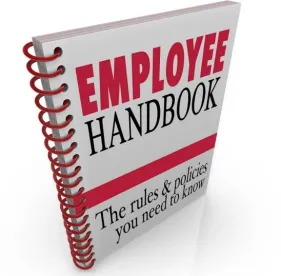New York City’s Department of Consumer Affairs (“DCA”), the agency tasked with enforcement of the City’s Earned Sick Time Act (“ESTA” or “Act”),[1] published a notice of adoption of an amendment to Chapter 7 of Title 6 of the Rules of the City of New York, the prior rules concerning the DCA’s interpretations and enforcement of the Act.[2] According to the DCA, the newly adopted rules (“Adopted Rules”) are intended to provide clarity to parts of the Act and guidance to employers, as well as establish additional requirements necessary to carry out the Act’s goals.[3] The Adopted Rules went into effect on March 4, 2016.
While the Adopted Rules do offer some additional guidance, in light of the lack of case law addressing ESTA and the DCA’s interpretation of key provisions, many unsettled issues remain.
Temporary Help Firms and Joint Employers
The Adopted Rules provide guidance on how the DCA intends to apply ESTA to temporary help firms and other employers deemed “joint employers” under the Act. The Adopted Rules specify that the DCA will deem employers to be joint employers in circumstances in which it determines that “[t]wo or more employers have some control over the work or working conditions of an employee.” It should be noted that this very broad standard is arguably more expansive than the tests for determining “joint employer” status recently articulated by the National Labor Relations Board in its August 2015 decision in the Browning-Ferris Industries case, as well as the definitions announced by the U.S. Equal Employment Opportunity Commission and the Occupational Safety and Health Administration.
In determining whether an employer employs the statutory minimum number of employees to be subject to ESTA’s obligation to provide paid sick leave (rather than unpaid sick leave), the Adopted Rules indicate that an employee will be counted even if jointly employed by another entity. Thus, an employer that is found to be the joint employer of three employees (e.g., through a temporary help firm) and exerts sole control over another three employees will be deemed by the DCA to employ five or more employees and therefore obligated to provide sick time in accordance with ESTA’s requirements.
Notably, however, the Adopted Rules state that temporary help firms that place temporary employees to perform services on behalf of another organization are solely responsible for compliance with ESTA for those temporary employees, regardless of the size of the organization where the employees were placed. A “temporary help firm” is defined in the Adopted Rules as “an organization that recruits and hires its own employees and assigns those employees to perform work or services for another organization” in order to support or supplement the other organization’s workforce; assist in special work situations, such as employee absences, skill shortages, or seasonal workloads; or perform special assignments.
Calculating the Number of Employees of an Employer
The Adopted Rules specify how the DCA expects a new employer (i.e., an employer in business for less than one year) to calculate the number of employees it has within the City of New York for purposes of determining whether it is obligated to provide its employees with paid sick time and comply with the Act’s other requirements. Specifically, the Adopted Rules state that if the number of employees fluctuates between fewer than five and five or more employees, then employer size should be determined based on the average number of employees per week during the 80 days immediately preceding the date that the employee used sick time.
The Adopted Rules now also indicate the DCA’s position regarding how an employer that has operated for one year or more should calculate the size of its workforce. The DCA expects the employer to count the number of employees working for the employer during the week in which the employee uses sick time. If the number of employees has fluctuated between fewer than five and five or more employees at least three times in the most recent calendar quarter,[4] then the DCA requires employer size to be based on the average number of employees per week during the previous calendar year.
Minimum Increments and Fixed Intervals for the Use of Sick Time
ESTA allows employers to set minimum increments, not to exceed four hours, for the use of sick time, as long as such increments are reasonable under the circumstances. The Adopted Rules further provide that employers may set fixed intervals of 30 minutes or less for the use of sick time, beyond the required minimum increment, and the employer may require fixed start and end times for these intervals.
For example, an employer may maintain a sick time policy that requires a four-hour minimum increment of sick time, and allows for half-hour fixed intervals for sick time that start on the hour or half-hour. Under this scenario, if an employee with an 8:00 a.m. to 4:00 p.m. workday has a 9:00 a.m. doctor’s appointment and takes the entire morning off for the appointment, the employer can require the employee to use four and a half hours of sick time and wait until 12:30 p.m. to clock in if the employee returns to the office at 12:17 p.m. (since the employee must take sick time in half-hour intervals, with a minimum of four hours). In other words, the employer need not permit the employee to take four hours and 17 minutes of sick time. Similarly, if the employee wanted to come into the office and work before the appointment, the employer could require him or her to clock out at 8:30 a.m. (even if the employee wanted to leave at 8:40 a.m.), so that the sick time would be taken in half-hour intervals as established by the employer’s policy.
Requirements for Written Sick Time Policies
The Adopted Rules include several requirements for employers’ written sick time policies. According to the Adopted Rules, a sick time policy must include, at a minimum:
-
the method of calculating sick time, which must either be:
-
frontloading—that is, specifying the amount of sick time with which employees will be provided at the beginning of the applicable year (so long as the amount of sick time equals or exceeds the total sick time required in that year), or
-
accrual—that is, identifying when the accrual of sick time starts, the rate at which sick time accrues, and the maximum number of hours an employee may accrue;
-
-
how sick time may be used, including any limitations or conditions placed on the use of sick time, such as:
-
notice requirements,[5]
-
requirements to provide written documentation or verification,
-
consequences for failure to provide such documentation,
-
minimum increments or fixed periods for use of sick time, and
-
consequences of misusing sick time; and
-
-
rules regarding employees’ ability to carry over unused sick time at the end of a calendar year.[6]
As interpreted by the DCA, the Adopted Rules require an employer to distribute or post its sick time policy. The employer must also distribute a “Notice of Employee Rights” under ESTA—this is an additional and separate obligation from the requirement to distribute or post the employer’s sick time policy. In addition, when a business is sold, the Adopted Rules require a successor employer to supply employees with a written sick time policy at the time of sale or acquisition, or as soon as practicable.
Recordkeeping
Under the Adopted Rules, the DCA expects employers to maintain, for a period of three years, records demonstrating compliance with ESTA, including records of the required policies.[7] Such records would include the following information for each employee:
-
the employee’s name, address, phone number, date of the start of employment and end of employment (if any), rate of pay, and whether the employee is exempt from overtime requirements;
-
the hours worked each week by the employee, unless the employee is exempt from overtime requirements and has a regular workweek of 40 hours or more;
-
the date and time of each instance of sick time used by the employee and the amount paid for each instance;
-
any change in the material terms of employment specific to the employee; and
-
the date that the Notice of Employee Rights was provided to the employee and proof of receipt of the notice.
Rehire Waiting Periods
The Adopted Rules establish requirements for situations in which employees are rehired after separation from employment. Employees who are rehired within six months of separation, and who had not yet reached the required 120 days to begin using accrued sick time under the Act during their first period of employment with the employer, must be credited at least the number of days worked within the same calendar year (but during the prior period of employment) towards the 120-day waiting period in connection with the new period of employment.
Carry-Over Rules Reiterated
The Adopted Rules also reiterate ESTA’s carry-over rules. Employees can carry over up to 40 hours of unused time from one calendar year to the next. Employers may prohibit employees from carrying over unused sick time only when the employer has a policy of paying employees for unused sick time at end of the year and employees are given an amount of paid sick time that meets or exceeds ESTA’s requirements on the first day of the immediately subsequent calendar year. Regardless of the number of hours that an employee carries over from one year to the next, employers are only required to allow employees to use up to 40 hours of sick time in a single calendar year.
Accrual of Sick Time for On-Call, Piecework, and Commission Employees, and Those Who Work Indeterminate Shift Lengths
The Adopted Rules also provide the DCA’s guidance with respect to calculating accrued sick time for employees who work on an “on call” basis, piecework basis, on commission, or those who work indeterminate shift lengths:
-
Scheduled time constitutes hours worked for on-call shifts if an employee is scheduled and available to work for an on-call shift and is compensated for the scheduled time, regardless of whether the employee works.
-
For employees who are paid on a piecework basis[8] and those paid on a commission basis, accrual is measured by the actual length of time spent performing work.
-
For employees with indeterminate shift lengths, accrual is based upon the hours worked by the replacement employee for the same shift. If this method of calculation is not possible, then accrual is based on the hours worked by the employee when he or she most recently worked the same shift in the past.
Wage Supplements
The Adopted Rules state that employers are not required to pay cash in lieu of supplements[9] for sick time used if remuneration for employment includes supplements. The fact that an employer does pay cash in lieu of supplements, however, does not relieve the employer from paying for sick time under the Act.
Abuse of Sick Time and Disciplinary Action
The Adopted Rules further specify that employers may take disciplinary action, up to and including termination of employment, against an employee who uses sick time for purposes other than those provided for in the Act. The Adopted Rules indicate that this may include a pattern of using sick time on, or adjacent to, weekends and holidays; using sick time when other leave has been denied; and taking sick time when the employee is assigned to work a shift that is undesirable.
Penalties for Noncompliance
The Adopted Rules note that failure to respond to a notice of violation from the DCA will result in a $500 penalty, in addition to other penalties or remedies that may be subsequently imposed.[10] Also, if the DCA discovers that an employer has an official or unofficial policy or practice of denying the use of paid sick time to employees under the Act, the employer will be liable for a penalty not to exceed $500 for a first violation, $750 for a second violation, and $1,000 for each succeeding violation. Additionally, the Adopted Rules specify that any penalties under the Act will be imposed on a per-employee basis (and not simply a per-violation basis).
Under the Adopted Rules, employers that fail to provide proper accrual of sick time under the Act will be required to apply sick time hours to an affected employee’s sick time balance in the amount of time that the employee should have accrued, up to 80 hours, or 40 hours if the employer is unable to determine the amount of time that the employee should have accrued.
Retaliation
ESTA prohibits employers from taking an “adverse employment action” against any employee who asserts his or her rights under the Act. The Adopted Rules clarify that an “adverse employment action” is “any act that is reasonably likely to deter an employee from exercising rights guaranteed under the Earned Sick Time Act.” Additionally, the Adopted Rules state that indirect evidence, such as temporal proximity, as well as direct evidence may be used to establish retaliation. Finally, retaliation can be found when protected activity is a motivating factor for an adverse action, but it does not have to be the only motivating factor.
What New York City Employers Should Do Now[11]
-
Ensure that joint employees (e.g., those supplied by a temporary help agency) are counted when determining whether you are subject to ESTA (but note that such temporary help firms are solely responsible for providing sick time to the temporary workers they supply).
-
When employee numbers fluctuate, calculate the number of employees based on the formulas specified in the Adopted Rules.
-
Train managers on non-retaliation based on ESTA usage, using the broad definition of “retaliation.”
-
Review sick time policies to ensure compliance with the listed requirements.
-
Ensure that accurate and complete records are kept, including:
-
each employee’s name, address, phone number, date of the start of employment and end of employment (if any), rate of pay, and whether the employee is exempt from the overtime requirements;
-
the hours worked each week by each employee;
-
the date and time of each instance of sick time used by each employee and the amount paid for each instance;
-
any change in the material terms of employment of an employee; and
-
the date that the Notice of Employee Rights was provided to each employee and proof of receipt of the notice.
-
-
If desired, modify sick time policies to require that employees take sick time in increments of no fewer than four hours, beginning or ending at intervals of a half-hour or less.
-
If desired, establish rules for disciplinary action based on employee abuse of sick time, and incorporate them into a written sick time policy.
-
If desired, review with counsel the difference between the text of ESTA and the guidance provided in the Adopted Rules, and how those differences may impact your sick time policies and procedures and influence your legal and compliance strategies and options.
-
Review collective bargaining agreements covering employees in New York City to determine whether the agreements waive inconsistent provisions of the Act, including the Adopted Rules, and address the waiver provisions when negotiating renewal and new agreements.
[1] ESTA does not apply to employees covered by a valid collective bargaining agreement (“CBA”) in effect on April 1, 2014, or by a subsequently negotiated CBA in which (i) the provisions of the ESTA are expressly waived and (ii) the CBA provides comparable benefits to the employees in terms of compensable time off. In addition, ESTA does not apply to any employee in the construction or grocery industry covered by a valid CBA if the provisions of the statute are expressly waived in the CBA.
[2] Pursuant to an amendment to the New York City Charter and Administrative Code (Int 0743-2015), effective March 29, 2016, the recently created Office of Labor Standards will enforce ESTA.
[3] For more information on the Act, please see our Act Now Advisory titled “Nothing to Sneeze At: New York City Mayor Signs Earned Sick Time Act into Law, Effective April 1.”
[4] A “calendar quarter,” undefined under the Act, can be based on any three consecutive months as defined by the company’s “calendar year,” which can be any consecutive 12-month period determined by the employer.
[5] The Adopted Rules note that for unforeseeable sick time, an employer may not require an employee to appear in person or deliver any documentation prior to the use of sick time.
[6] The employer should also define what its “calendar year” is within the sick time policy.
[7] If an allegation is brought by the DCA, a failure to keep or produce proper records creates a reasonable inference that the allegation is a material fact.
[8] Under the Adopted Rules, the rate of pay for employees who are paid on a piecework basis is calculated “by adding together the employee’s total earnings from all sources for the most recent workweek in which no sick time was taken and dividing that sum by the number of hours spent performing the work during such workweek.” A “workweek” is defined as “a fixed and regularly recurring period of 168 hours, or seven consecutive 24-hour periods.”
[9] Under the New York Labor Law, the term “supplements” means all remuneration for employment paid in any medium other than cash, or reimbursement for expenses, or any payments that are not “wages” within the meaning of the law, including, but not limited to, health, welfare, non-occupational disability, retirement, vacation benefits, holiday pay, life insurance, and apprenticeship training.
[10] The DCA may impose a penalty to be paid to the City in addition to a restitution penalty paid directly to the employee him- or herself, which often is of the same dollar amount, based upon the violations.
[11] Note that the Adopted Rules do not address employers exempted from ESTA’s requirements by the terms of a CBA.







 />i
/>i

